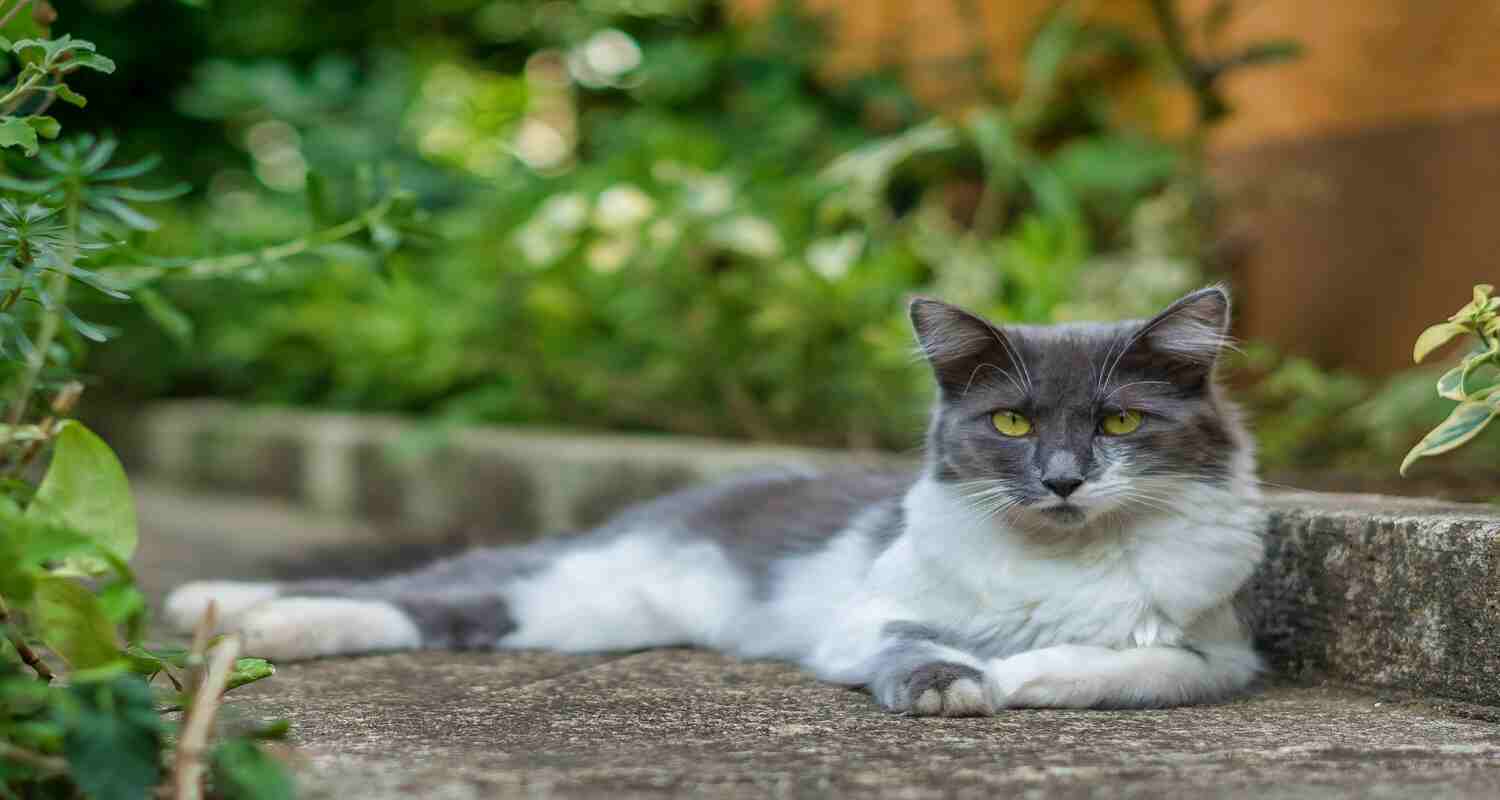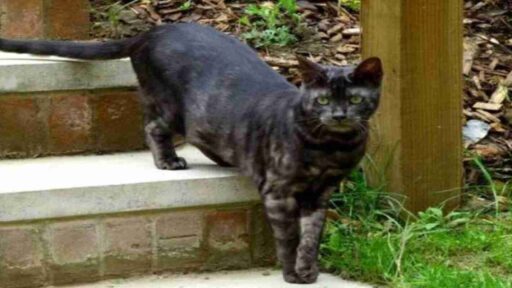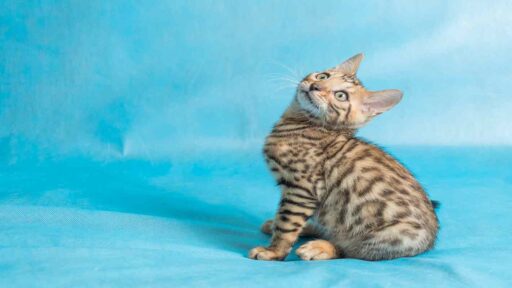Grey And White Cats! Welcome to the Monochrome Whisker Haven: Explore the enchanting world of these stylish feline companions, where elegance meets playful paws. Join us on a journey through the unique charm and timeless beauty that define Grey And White Cats.
The fascination of grey and white cats
Grey and white cats: a captivating blend of elegance and charm. Their distinct markings create a striking and timeless appeal. Playful yet sophisticated, these feline companions leave a lasting impression. Explore the magic and unique allure of these monochrome marvels.
Grey And White Cats’ characteristics
Grey and white cats exhibit a range of charming characteristics:
- Elegant Appearance: Their sleek grey and white fur creates a visually appealing and sophisticated look.
- Playful Nature: Despite their elegant demeanor, these cats often possess a playful and lively disposition.
- Distinct Markings: The contrast between grey and white fur results in distinctive and eye-catching patterns, making each cat unique.
- Affectionate Companionship: Many grey and white cats are known for their affectionate and loving behavior, forming strong bonds with their owners.
- Intelligence: These felines often showcase intelligence, quickly adapting to their surroundings and engaging in interactive play.
- Varied Breeds: Grey and white markings can be found in various cat breeds, each with its own characteristics, adding to the diversity within this category.
Breeds and Varieties
Several cat breeds exhibit a captivating combination of grey and white markings. Here are a few:
- British Shorthair:
- Known for a plush coat, round face, and dense build.
- Grey and white variations include classic tabby patterns.
- Maine Coon:
- One of the largest domestic cat breeds with tufted ears and bushy tails.
- Grey and white Maine Coons may display distinctive patterns.
- Persian:
- They are recognized for their long, luxurious fur and distinctive flat faces.
- Some Persian cats may have grey and white colorations.
- Ragdoll:
- Large, affectionate cats with striking blue eyes.
- Grey and white Ragdolls may have color points on their ears, faces, paws, and tails.
- Domestic Shorthair:
- A versatile category that includes a variety of mixed-breed cats.
- Grey and white coat patterns are common among domestic shorthairs.
- Scottish Fold:
- Known for their folded ears and round faces.
- Grey and white Scottish Folds showcase a unique appearance.
- Turkish Van:
- It is characterized by a semi-longhaired coat and distinct color patterns.
- Some Turkish Vans display grey and white markings.
The distinct features of each breed:
Here are insights into the distinct features of each mentioned grey and white cat breed:
- British Shorthair:
- Distinctive Features: Round face, large eyes, dense and plush coat.
- Personality Traits: Easygoing, adaptable, and affectionate.
- Maine Coon:
- Distinctive Features: Large size, tufted ears, bushy tail, and tufted paws.
- Personality Traits: Gentle, sociable, and known as “gentle giants.”
- Persian:
- Distinctive Features: Long, luxurious fur, flat face, and large, expressive eyes.
- Personality Traits: Calm, affectionate, and enjoys a relaxed lifestyle.
- Ragdoll:
- Distinctive Features: Striking blue eyes, semi-longhair coat, and color points.
- Personality Traits: Gentle, docile, and often goes limp when held.
- Domestic Shorthair:
- Distinctive Features: Varied coat patterns and colors.
- Personality Traits: Diverse, adaptable, and can have a wide range of temperaments.
- Scottish Fold:
- Distinctive Features: Folded ears, round face, and plush coat.
- Personality Traits: Sweet-tempered, adaptable, and enjoys human companionship.
- Turkish Van:
- Distinctive Features: Semi-longhaired coat, colored markings on the head and tail.
- Personality Traits: Energetic, loves water, and has a playful nature.
Grey And White Cats Personality Traits:
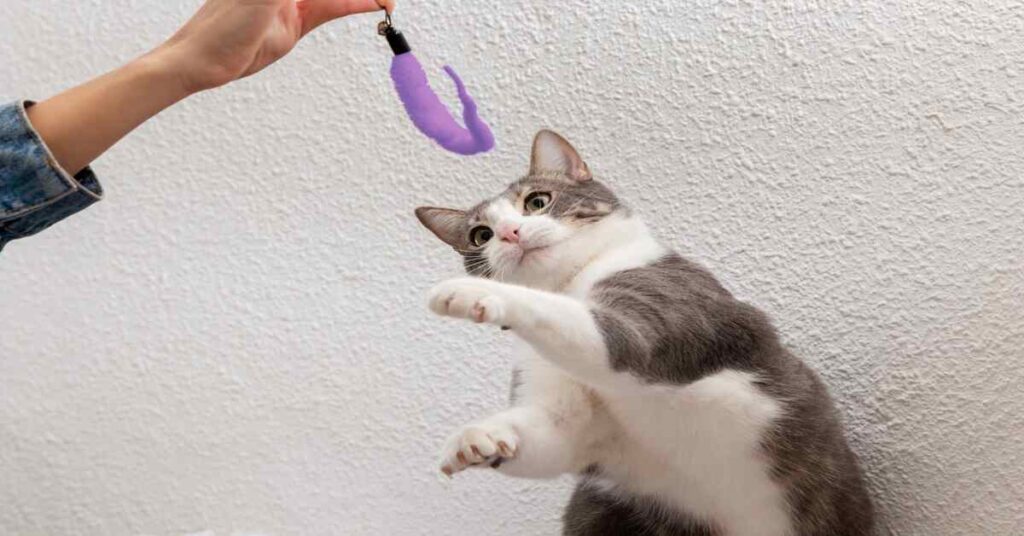
Grey and white cats, regardless of a specific breed, often share common personality traits that contribute to their widespread appeal:
- Affectionate Nature:
- Many grey and white cats are known for their affectionate demeanor.
- They often enjoy cuddling, being close to their owners, and seeking attention.
- Playful Disposition:
- Grey and white cats exhibit a playful and lively nature.
- They engage in interactive play, chasing toys, and exploring their environment with curiosity.
- Adaptable Temperament:
- These cats are often adaptable to various living situations.
- They can adjust well to changes in their surroundings and tend to be versatile companions.
- Intelligence:
- Grey and white cats are frequently noted for their intelligence.
- They may quickly learn new behaviors, respond to training, and exhibit problem-solving skills.
- Gentle Demeanor:
- Many possess a gentle and calm disposition.
- This trait makes them suitable for households with children or other pets.
- Expressive Communication:
- Grey and white cats often communicate with a range of vocalizations and body language.
- They may use purring, meowing, and other expressions to convey their needs and feelings.
- Independent Spirit:
- While affectionate, these cats also value their independence.
- They appreciate having their own space and time for solitary activities.
Anecdotes that showcase the unique behaviors of grey and white cats:
- The Window Watcher:
- Meet Luna, a charming grey and white cat with a penchant for window-watching.
- Every morning, as the sun rises, Luna positions herself on the windowsill, observing the world outside with intense curiosity.
- Her owners fondly recall how Luna’s tail flicks with excitement as she tracks birds, leaves, and passing neighbors, creating a daily spectacle of feline wonder.
- The Playful Acrobat:
- Oliver, a mischievous grey and white kitten, has a remarkable talent for acrobatics.
- His favorite game involves leaping and somersaulting through the air to catch a feather toy.
- Oliver’s acrobatic antics provide endless entertainment, showcasing the athleticism and agility often found in grey and white cats.
Health and Care Tips:
tips on maintaining the health and well-being of grey and white cats.
Maintaining the health and well-being of grey and white cats involves a combination of proper care, nutrition, and regular veterinary attention. Here are some tips:
- Balanced Diet:
- Provide well-balanced and nutritious cat food to support their overall health.
- Consider options that address specific needs, such as age, weight, and any dietary restrictions.
- Regular Veterinary Check-ups:
- Schedule routine check-ups with a veterinarian to monitor your cat’s health.
- Keep vaccinations up-to-date and discuss preventive care measures with your vet.
- Hydration:
- Ensure access to fresh and clean water at all times to prevent dehydration.
- Monitor water intake, especially in warmer weather, to maintain proper hydration levels.
- Grooming Routine:
- Brush your cat’s fur regularly to prevent matting and reduce shedding.
- Check ears, eyes, and teeth for any signs of infection or issues.
- Interactive Play:
- Engage in regular interactive play to keep your cat physically and mentally stimulated.
- Provide a variety of toys that encourage natural behaviors like hunting and chasing.
- Safe Indoor Environment:
- Create a safe and enriched indoor environment to protect your cat from potential hazards.
- Ensure windows and balconies are secure, and remove toxic plants or substances.
- Litter Box Hygiene:
- Keep the litter box clean by scooping it daily and changing the litter regularly.
- Choose a litter that your cat finds comfortable and suitable.
- Weight Management:
- Monitor your cat’s weight to prevent obesity-related health issues.
- Adjust their diet and play routines accordingly to maintain a healthy weight.
- Spaying/Neutering:
- Consider spaying or neutering your cat to prevent unwanted behaviors and contribute to overall well-being.
- Microchipping:
- Ensure your cat has a microchip with updated information to aid in their safe return if they get lost.
Detailed breakdown of grooming, nutrition, and veterinary care advice for the well-being of grey and white cats:
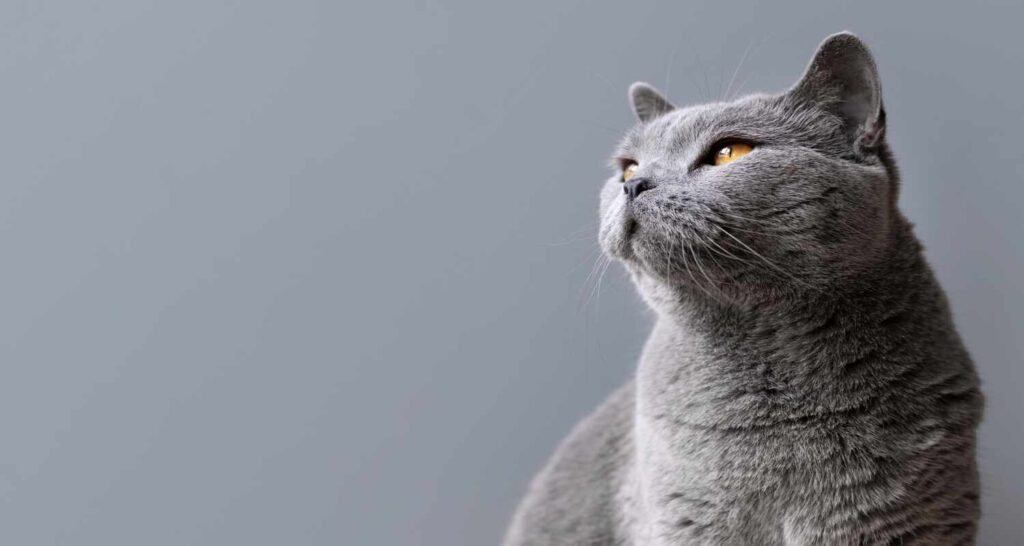
Grooming:
- Regular Brushing:
- Brush your grey and white cat’s coat regularly to prevent matting and reduce shedding.
- Pay attention to areas prone to tangling, such as behind the ears and under the armpits.
- Nail Trimming:
- Trim your cat’s nails as needed to prevent discomfort and potential injury.
- Use cat-friendly nail clippers and be cautious not to cut into the quick.
- Ear Cleaning:
- Check and clean your cat’s ears regularly to prevent wax buildup or infections.
- Use a vet-recommended ear-cleaning solution and a gentle touch.
- Oral Care:
- Introduce a dental care routine, including brushing your cat’s teeth or providing dental treats.
- Dental health is crucial, so consult your vet for professional cleanings if needed.
Nutrition:
- High-Quality Cat Food:
- Choose a high-quality cat food that meets the nutritional needs of your grey and white cat.
- Consider age-appropriate formulas and address any specific health concerns with your vet.
- Portion Control:
- Monitor your cat’s weight and adjust their food portions accordingly.
- Consult your vet for guidance on maintaining a healthy weight.
- Hydration:
- Ensure your cat has access to fresh and clean water at all times.
- Wet cat food or adding water to dry food can contribute to hydration.
Veterinary Care:
- Routine Check-ups:
- Schedule regular veterinary check-ups, at least once a year, for preventive care.
- Discuss vaccinations, parasite control, and any concerns you may have.
- Parasite Prevention:
- Administer flea and tick prevention as recommended by your vet.
- Discuss deworming options and keep an eye out for any signs of parasites.
- Spaying/Neutering:
- Consider spaying or neutering your cat to prevent unwanted behaviors and health issues.
- Discuss the appropriate timing with your vet.
- Emergency Preparedness:
- Be aware of emergency veterinary services in your area.
- Familiarize yourself with common signs of illness and seek prompt veterinary attention if needed.
Grey And White Cats Adoption Stories:
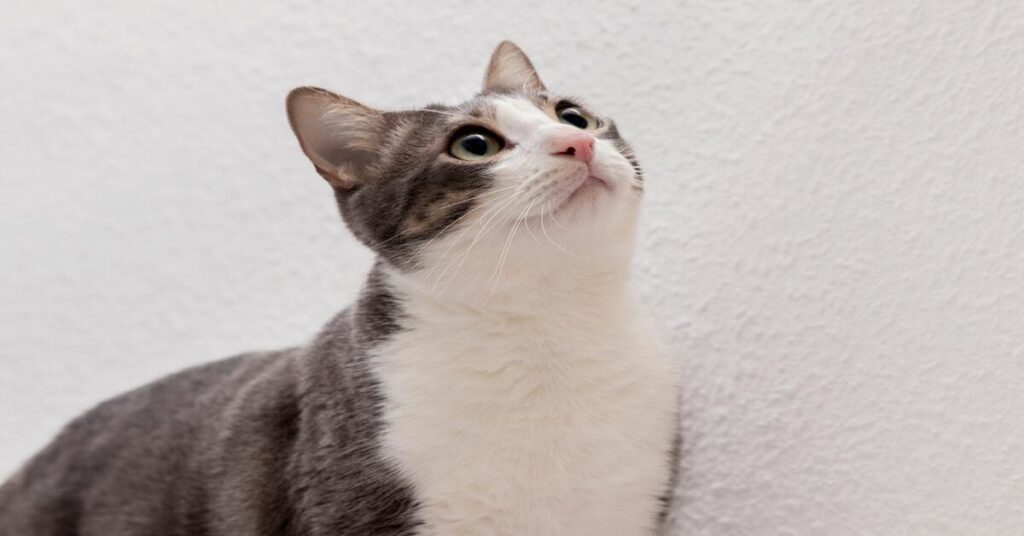
Adoption stories of grey and white cats often showcase the transformative power of providing a loving home. Here are a couple of heartwarming tales:
- Whiskers’ Second Chance:
- Meet Whiskers, a grey and white cat found in a local shelter, timid and scared.
- A compassionate family decided to adopt Whiskers, giving him a second chance at a happy life.
- Over time, Whiskers blossomed into a confident and affectionate companion, proving the incredible impact of adoption.
- From Stray to Snuggles:
- Luna, a grey and white stray cat, wandered into a caring couple’s backyard one chilly evening.
- Recognizing Luna’s need for a home, they provided warmth, food, and veterinary care.
- Luna, once a wary street cat, transformed into a snuggly and content member of the family, illustrating the rewarding journey of rescuing a cat in need.
Fun Facts :
interesting and entertaining facts about grey and white cats:
- Vanishing Act:
- Grey and white cats, especially those with a combination of the two colors in a distinctive pattern, can sometimes appear to “vanish” in certain lighting conditions. This optical illusion adds to their mysterious charm.
- Genetic Variety:
- Grey and white cats can display various coat patterns, including tabby stripes, color points, or solid color patches. The combination of different genes contributes to the wide array of patterns seen in these feline companions.
- Heterochromia Wonders:
- Some grey and white cats may exhibit heterochromia, a condition where each eye is a different color. This captivating trait adds a unique and mesmerizing aspect to their appearance.
- Historical Royalty:
- Throughout history, grey and white cats have been associated with royalty and nobility. Their elegant appearance and regal demeanor often made them sought-after companions for aristocrats
More Grey And White Cats facts
- Whisker Patterns:
- The whisker patterns on grey and white cats can be quite striking. Some may have asymmetrical whisker colors, adding to their overall charm and uniqueness.
- Temperature-Sensitive Coats:
- Certain grey and white cats, particularly those with the “chinchilla” coat pattern, may have fur that changes color based on the temperature. Warmer areas of their bodies may display a lighter shade.
- Expressive Tails:
- Grey and white cats often have expressive tails that they use to communicate. A raised tail can indicate excitement or happiness, while a puffed-up tail may signal fear or agitation.
- Famous Grey and White Cats:
- Some well-known fictional cats with grey and white coloring include the iconic “Puss in Boots” from fairy tales and “Snowball II” from The Simpsons.
- Health Beliefs:
- In some cultures, grey and white cats are considered to bring good luck and positive energy. They are often seen as symbols of prosperity and happiness.
- International Popularity:
- Grey and white cats are beloved across the globe, and many cultures hold them in high regard. Their popularity extends to various cat breeds, making them a widely appreciated and cherished feline variety.
Here are some more cat fun facts!
Grey And White Cats FaQs:
What does a GREY and white cat symbolize?
A grey and white cat can symbolize independence, adaptability, and mystery. The interpretation may vary based on cultural and personal beliefs.
Are white and GREY cats friendly?
The friendliness of white and grey cats varies widely based on individual personality rather than coat color. While some white and grey cats may be friendly and sociable, others can be more reserved or independent. It’s essential to consider each cat’s unique temperament and socialization experiences when determining their friendliness.
How rare is a gray and white cat?
Gray and white cats are not particularly rare. The combination of grey and white fur is a common color pattern seen in various cat breeds and mixed-breed cats. The prevalence of this coloration depends on the specific population and geographic location. It’s important to note that rarity can vary for different coat patterns in various regions and breeds. While some coat colors or patterns may be less common, grey and white cats are generally found in many places and are not considered exceptionally rare.
What are gray cats good for?
The qualities or benefits associated with grey cats are not determined by their color but rather by their individual personality, breed characteristics, and the way they are raised and socialized. Cats, regardless of their color, can make excellent companions and pets. Here are some general qualities that may be associated with grey cats or cats in general:
- Companionship: Cats, including grey ones, are known for providing companionship and forming strong bonds with their owners.
- Reducing Stress: Interacting with cats has been shown to reduce stress and promote relaxation. The calming presence of a cat can be beneficial for mental well-being.
- Hunting Skills: Cats, by nature, have hunting instincts. While domestic cats may not need to hunt for survival, they might display playful hunting behaviors that can be entertaining for owners.
- Low Maintenance: Cats are generally independent animals and require less hands-on care compared to some other pets. They groom themselves, use a litter box, and often adapt well to indoor living.
- Rodent Control: Cats are natural hunters, and some individuals may be effective in controlling household pests, such as mice or insects.
- Affectionate Behavior: Many cats, including those with grey fur, can be affectionate and enjoy cuddling and being close to their owners.
Read about the bicolor breed

